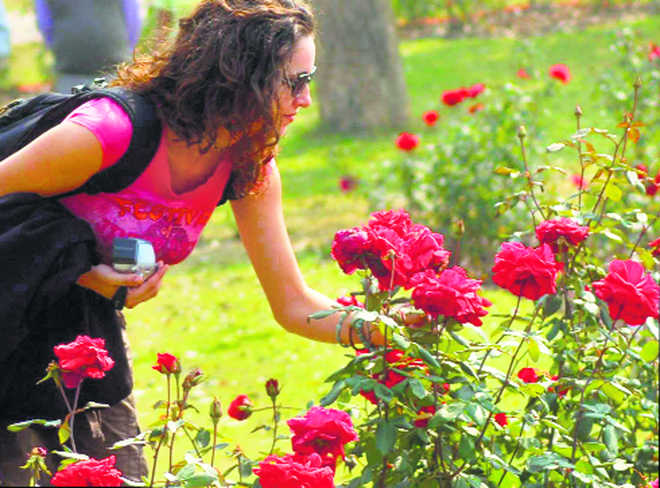
Lt Gen Baljit Singh (retd)
I have the luck of being situated a mere four minutes walking distance from a maze of pathways which for three months of the year (December to February) are flanked by rose blossoms in a variety of colours and contours. Several blooms go by fancy names but a larger number are anonymous, which kindles memory of Romeo’s desperation in trying to soothe one of Juliet’s misgivings:
“What is in a name?
That which we call a rose
By any other name would smell as sweet.”
The first rose bed I hit upon was ablaze with Black Ruby blooms. And as I had just finished reading Kohinoor by William Dalrymple and Anita Anand, here was evidence indeed as to why the Timur Ruby was prized as much as the Kohinoor per se, that the Mughal Emperors would call the Timur gem by endearing names like Fakhraj, Ayen-al-Hurst, Eye of the Houri and so on.
To begin with, the Zakir Hussain Rose Garden in the heart of Chandigarh had a humble beginning with perhaps no more than 50 varieties of rose plants and mostly in shades of red, pink, yellow and white yet by the sheer extent of its layout covering over 27 acres, it laid claim to be “the largest in Asia”. Its conception of the overall botanical content, right down to the selection of species of trees, shrubs, their location down to even the designs of rose-beds was the brain child of Dr MS Randhawa, the first Commissioner of Chandigarh who was truly in the mould of what John Keay (author of India Discovered) had stated:
“The men who discovered India came as amateurs; by profession they were soldiers and administrators. But they returned home as giants of scholarship.”
Over time, several species fell to disease and age and the rose plants too suffered from certain genetic atrophy, resulting in fewer and poorer blooms. One of Dr Randhawa’s successors, Gen SF Rodrigues, with no pretensions of his predecessor’s botanical acumen, invited expert “roserians” from Bangalore for advise on the revival of the Rose Garden to its past glory. In the process, the entire old lot of rose plants was uprooted, soil in the rose beds was replaced and, more significantly, the variety went up from 50 to a whopping count of 825 and the number of rose plants to over 32,000!
In this overall rejuvenation scheme, as a special dispensation, he permitted the sinking of a borewell to meet the demands of regular irrigation of rose beds, besides the spacious lawns. The seasonal stream, which meanders in crescents and oxbows, was cleared of weeds and garbage accumulated over the years. Regrettably, this channel has been allowed to slide back to a sorry sight.
These genetically modified, tissue-cultured plants took perhaps a year more to mature, but the General had the satisfaction that before he demitted his charge of UT administrator, the Zakir Hussain Rose Garden was abloom to new heights. But there is a downside to the genetically modified rose plants — these have zero fragrance. However, the new variety in colour, both mono colours and subtle admixture of several shades of petals making up a single bloom, is simply sublime.
Unfortunately, the abnormal climatic conditions this winter haven’t gone down well with rose blooms. More than 90 per cent of rose beds have less than one in ten plants in bloom. There is an urgent need for experts to review the cause and implement appropriate measures. The Rose Festival could be a good starting point.



























